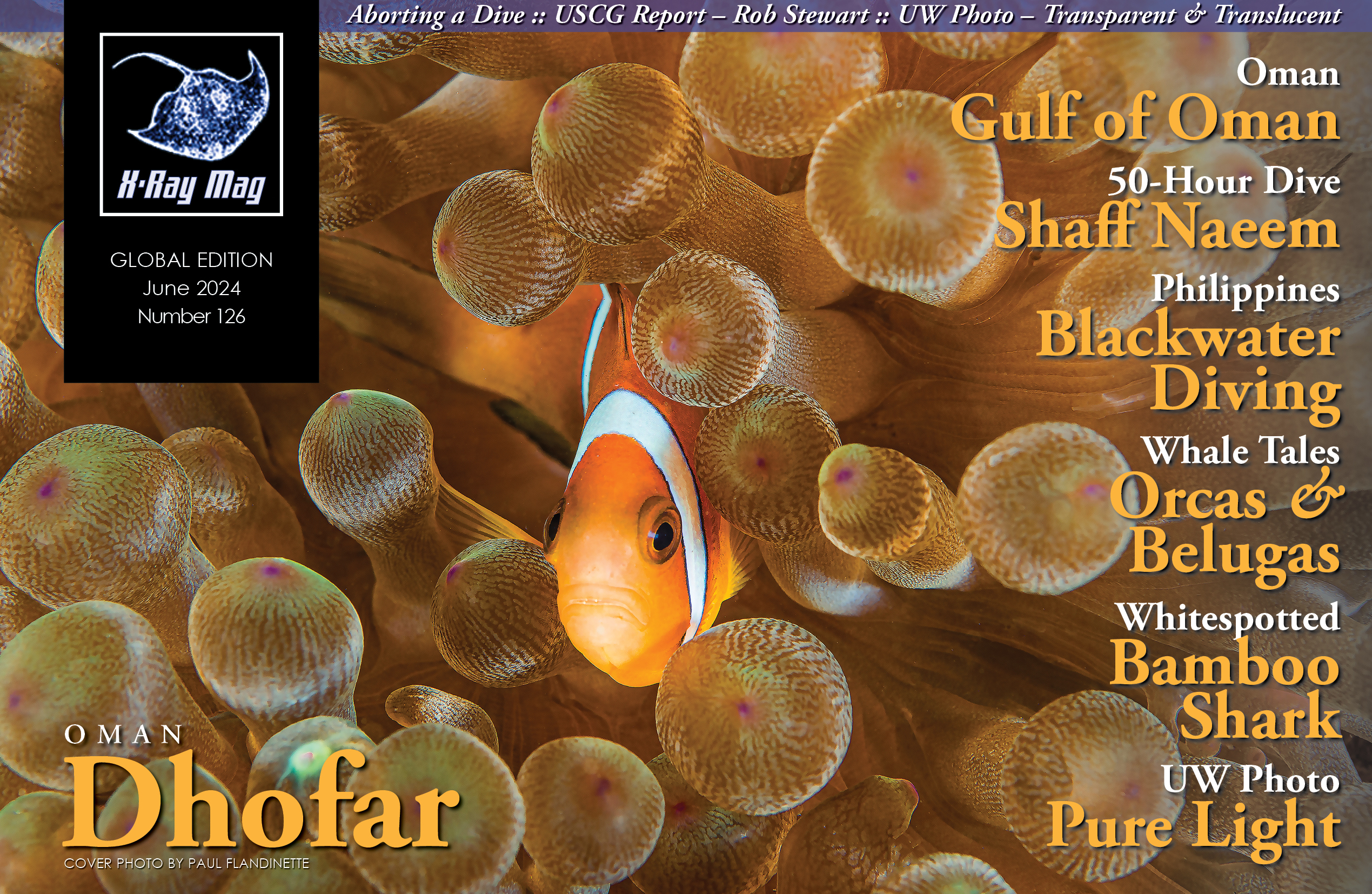Are belugas the world’s friendliest whales? They are known to be extremely playful and curious. Malcolm Nobbs was keen to observe those qualities first-hand. So, he flew to Churchill in the Canadian subarctic—the “Beluga Capital of the World.”
Contributed by
There are estimated to be around 3,000 belugas in the icy waters of the Churchill River estuary. Their presence is a testament to the region’s importance as a sanctuary for the world’s most substantial beluga population. However, poor water clarity can make it challenging to estimate their actual numbers. This factor also makes it difficult to get good images of them.

Belugas, with their impressive stature reaching up to 4.5 metres in length and a mass nearing 1,900kg, navigate their chilly domain with grace. Their longevity, speculated to span between 50 and 80 years, is a subject of scientific contemplation. The method of determining the age of these cetaceans, by taking a small sliver of one of their teeth and counting the rings in it, is mired in debate over whether a ring equals one year or two!
Since Canada has banned swimming with cetaceans, I photographed them by lying on a foam board towed behind a zodiac, a technique known locally as “beluga boarding.” As my photos show, they posed for me repeatedly, sometimes swimming directly in front of me for minutes at a time.
So, are belugas the world’s friendliest whale? Based on my experience, I think they possibly are. ■
The author’s trip was organised by Big Fish Expeditions.

Based in Nelson Bay in New South Wales, Australia, UK native Malcolm Nobbs is a widely published underwater photographer and regular contributor to both Australian and dive magazines around the world. Formerly an active member of the British Society of Underwater Photographers (BSoUP), he moved to Australia in 2009, after penning his first underwater magazine article. Teaming up with Jamie Watts in 2013, the pair have produced a constant stream of articles. Over the years, Nobbs has steadily expanded his website into one of the world’s largest scuba-related websites, with over 10,000 categorised and searchable marine life images, numerous dive site location reports, published works and videos. Visit: malcolmnobbs.com

BELUGA WHALE FACTS
Edited by G. Symes
- The beluga whale (Delphinapterus leucas), often referred to as the white whale, sea canary (due to its high-pitched calls), or melonhead, is a notable Arctic and sub-Arctic cetacean. Alongside the narwhal, it is one of two members of the Monodontidae family and the sole representative of the Delphinapterus genus.
-
Image

Beluga. Photo by Malcolm Nobbs. Belugas are uniquely adapted to Arctic life. Their all-white colour and lack of a dorsal fin facilitate smooth swimming under ice. Males can reach up to 5.5m (18ft) in length and weigh around 1,600kg (3,530 lbs), with a significant portion of this weight being blubber. They have a robust stocky body with a prominent protuberance on their head that houses a large echolocation organ known as the melon. This echolocation ability, along with their highly developed sense of hearing, allows them to navigate and locate breathing holes beneath the ice.
- Social creatures, belugas typically form groups of around 10 but can gather in the hundreds or even thousands during summer in estuaries and coastal regions. Though slow swimmers, they can dive to depths of 700m (2,300ft). Their diet is diverse and changes with location and season, including fish such as cod, salmon and halibut, and invertebrates such as shrimp, squid, clams and crabs.
- Most belugas inhabit the Arctic Ocean and surrounding seas near North America, Russia and Greenland, with a global population estimated at around 200,000. They are migratory, spending winters near the Arctic ice cap and moving to warmer estuaries and coastal areas in summer. However, some populations remain in one area throughout the year.
- Belugas swim more slowly than other toothed whales like the killer whale and common bottlenose dolphin due to their less hydrodynamic shape and limited tailfin movement. Their typical swimming speeds range from 3 to 9km/h (1.9 to 5.6mph), but they can sustain speeds of 22km/h for up to 15 minutes. Unlike most cetaceans, belugas can swim backwards, although they do not leap out of the water like dolphins or killer whales.
- While they usually dive to depths of around 20m (66ft), belugas are capable of much deeper dives. Captive individuals have been recorded diving between 400 and 647m, while wild belugas have reached depths exceeding 700m, with the deepest recorded dive being over 900m. Dives typically last 3 to 5 minutes but can extend beyond 20 minutes. ■
SOURCE: Wikipedia



























